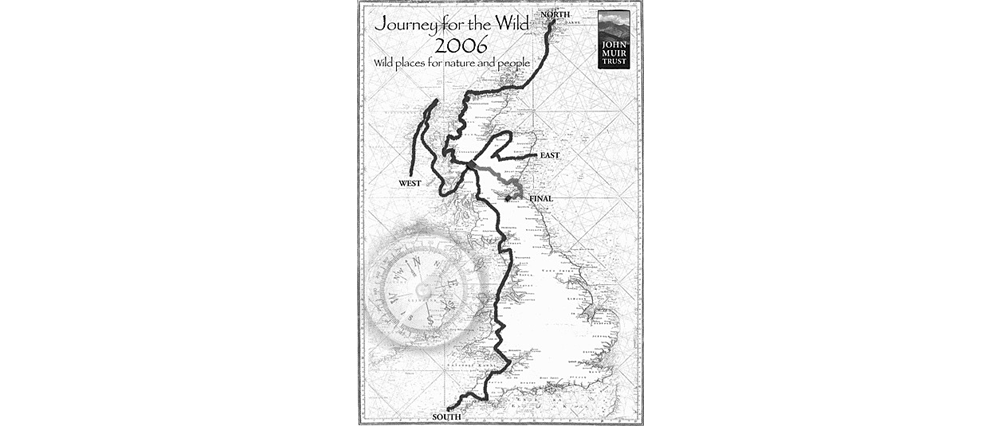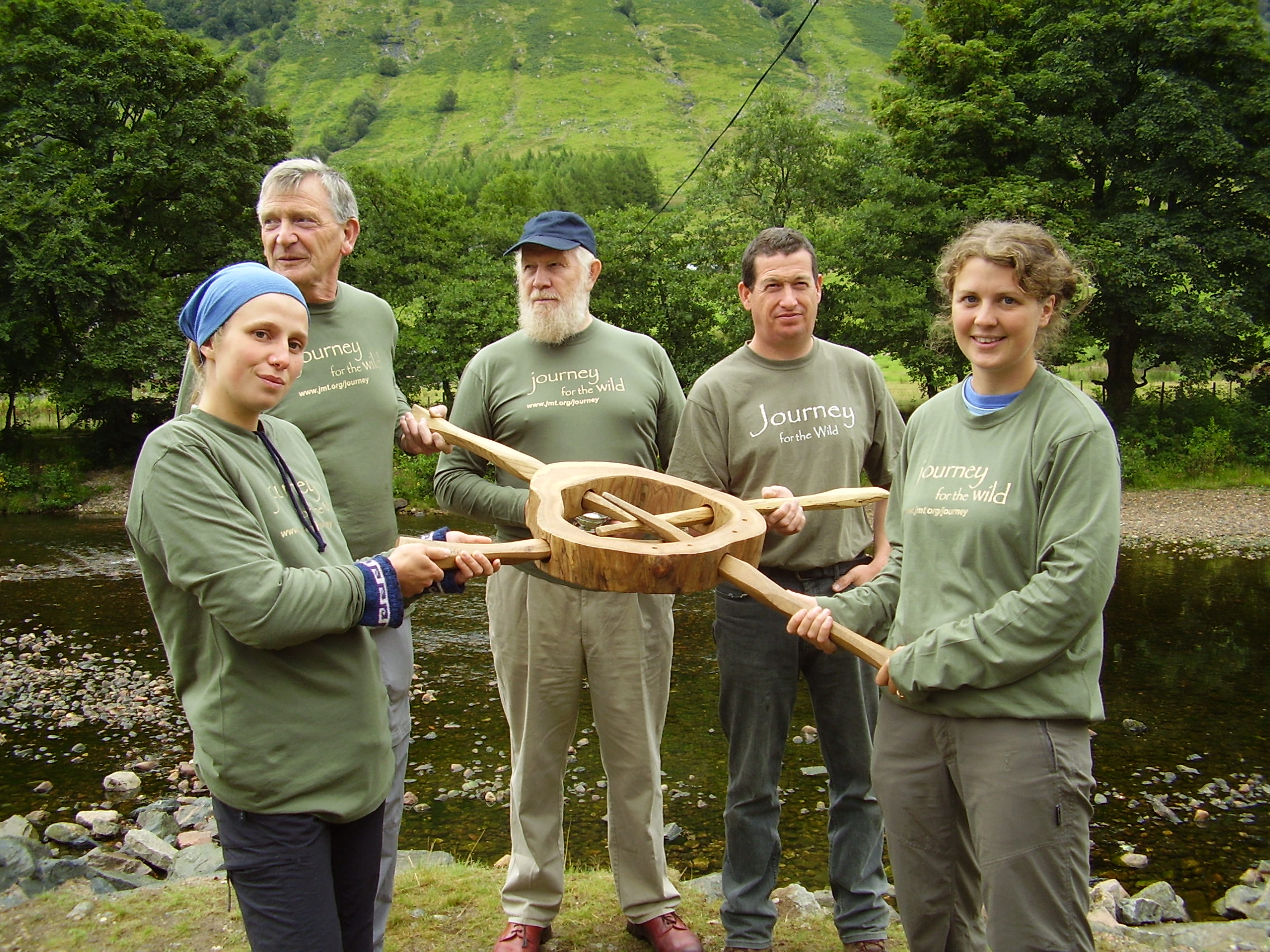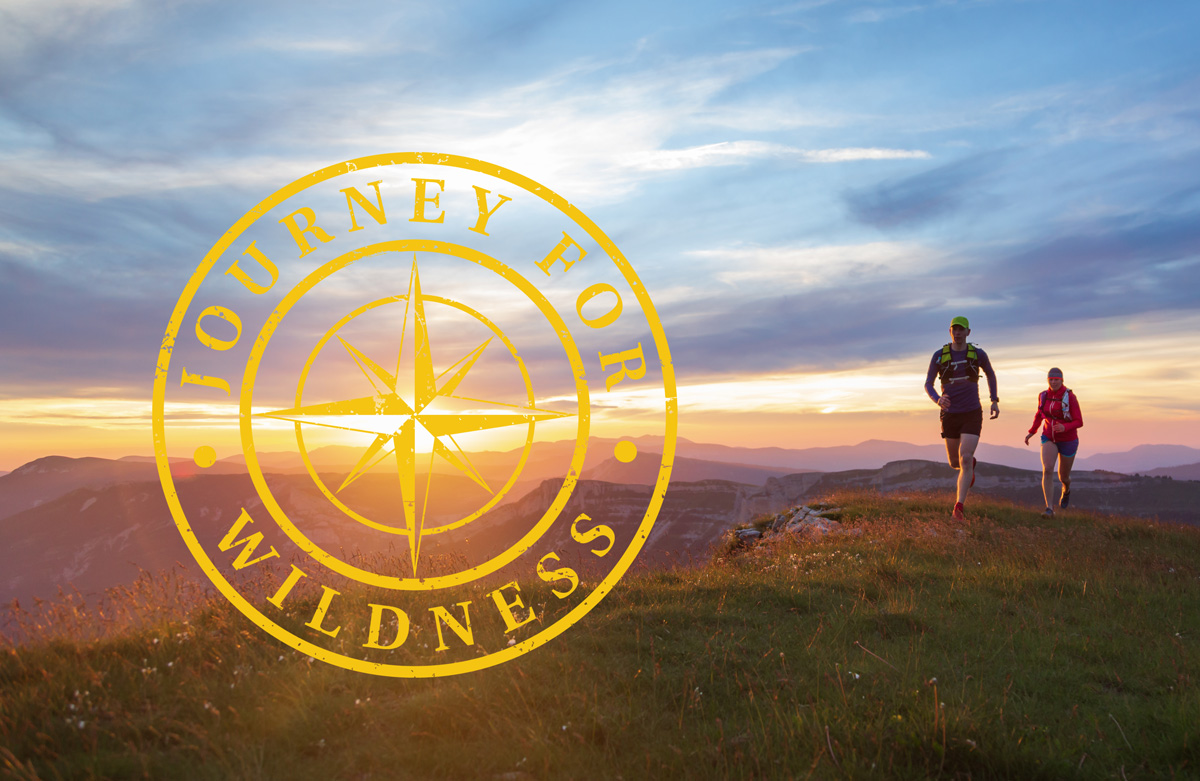Journey for the Wild: the history
On the eve of the 21th anniversary of the Trust buying Ben Nevis – and the launch of our latest Journey for Wildness Appeal - we take a look back at the original Journey…

The John Muir Trust's original Journey for the Wild participants crossed land, sea, rivers and lochs in an epic, 2500-mile pilgrimage to Ben Nevis - just six years after the Trust’s purchase of the iconic mountain in 2000.
Over 1,500 members, volunteers and staff from all backgrounds and abilities took it in turns to carry specially carved wooden message batons across some of the wildest parts of the UK, helping to raise awareness of the importance of wild places and the work of the Trust in protecting them.
The ambitious adventure began in May of 2006 with the batons taken to the remotest cardinal points in the UK - the Scilly Isles, Shetland, St. Kilda and the North Sea. From each of these far flung places, participants began their journeys using only non-motorised transport such as foot, boat, kayak and bike.
The five-month journey spawned many campfire tales including encounters with basking sharks and killer whales; dives with sea life; the crossing of spectacular mountain ranges; losing (and finding) a baton in a bog on Lewis and sailing down the Clyde in the Gal Gael’s Norse-replica boat.

A powerful symbol
Ben Nevis was the obvious destination for such an extraordinary expedition. When journeyers arrived they reunited the four message batons with an elm roundel - creating the ‘Journey Compass’ (pictured above with (l-r) Nigel Hawkins, Dick Balharry, Dave Picken and Alison Austin). After a big celebration they carried it on the final leg of the journey, to Edinburgh, where it was presented to the Scottish Parliament in September, 2006.
The Journey Compass, which now hangs in our Leith office, was designed and sculpted by the Borders Forest Trust. It was conceived as a living sculpture created by the people and landscapes the wooden message batons passed through.
Each baton, representing each of the cardinal directions they originated from, is carved from a different native wood. Ash was used for north, oak for the south, the west is made of yew, the east from birch, the roundel is elm and it carries this message for the wild:
Only in the wild places can we truly experience
What it is to be alive, to be part of the web of all life on Earth.
We have an awesome responsibility to care for that fragile web.
Our health, harmony and happiness depend on it.
Wild places will teach us how to do this if we have ears to listen,
Eyes to see, and a mind open to Nature's rhythms.
We must act now to protect and cherish our wild places.
The Journey continues...
In 2021 we are renewing our call to take action for wild places by inviting our members and supporters to join our team (see Ross Brannigan's ambitious plan) and take on a Journey for Wildness and raise funds for the John Muir Trust's work tackling issues such as the climate crisis and biodiversity loss.
